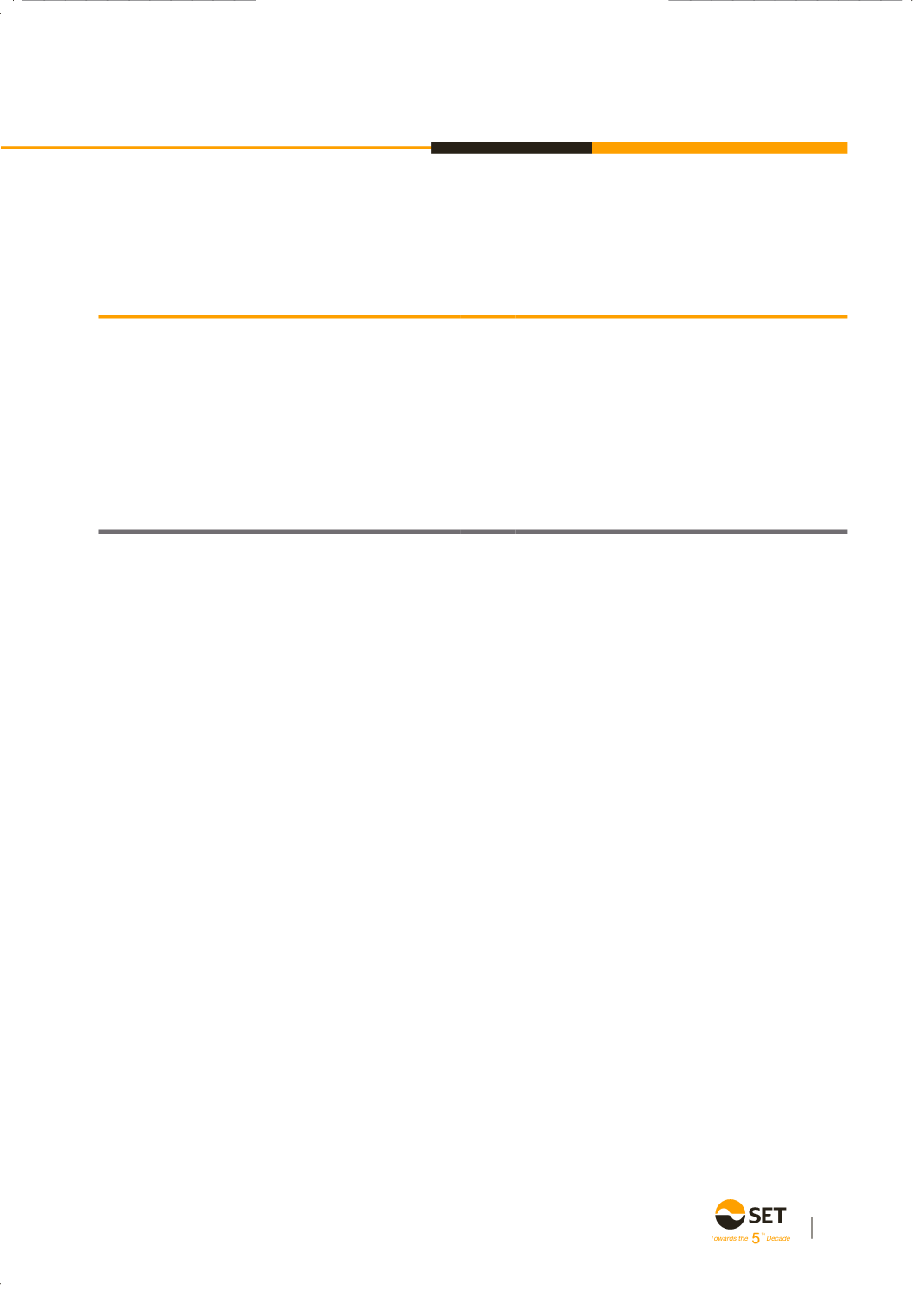

109
2) New financial reporting standards, revised accounting standards and revised financial reporting standards are effective
on 1 January 2016. These standards are relevant to the Group and are not early adopted:
a) Financial reporting standards, which have a significant impact to the Group:
TAS 16 (revised 2015)
TAS 19 (revised 2015)
TAS 24 (revised 2015)
TAS 36 (revised 2015)
TAS 38 (revised 2015)
TAS 40 (revised 2015)
TFRS 8 (revised 2015)
TFRS 10 (revised 2015)
TFRS 13 (revised 2015)
Property, plant and equipment
Employee benefits
Related party disclosures
Impairment of assets
Intangible assets
Investment property
Operating segments
Consolidated financial statements
Fair value measurement
TAS 16 (revised 2015), ‘Property, plant and
equipment’ clarifies how the gross carrying amount and the
accumulated depreciation are treated where an entity
uses the revaluation model.
TAS 19 (revised 2015), ‘Employee benefits’
is amended to apply to contributions from employees or
third parties to defined benefit plans and to clarify
the accounting treatment of such contributions.
The amendment distinguishes between contributions
that are linked to service only in the period in which they
arise and those linked to service in more than one period.
TAS 24 (revised 2015), ‘Related party disclosures’
includes as a related party an entity that provides key
management personnel services to the reporting entity
or to the parent of the reporting entity (the ‘management
entity’). Disclosure of the amounts charged to
the reporting entity is required.
TAS 36 (revised 2015), ‘Impairment of assets’ is
amended to provide additional disclosure requirement
when the recoverable amount of the assets is measured
at fair value less costs of disposal. The disclosures
include 1) the level of fair value hierarchy, 2) when
fair value measurement categorised within level 2 and
level 3, disclosures is required for valuation technique
and key assumption.
TAS 38 (revised 2015), ‘Intangible assets’ is amended
to clarify how the gross carrying amount and the
accumulated amortisation are treated where an entity uses
the revaluation model.
TAS 40 (revised 2015), ‘Investment property’ clarifies
that TFRS 3 should be applied when determining whether
an acquisition of an investment property is a business
combination.
TFRS 8 (revised 2015), ‘Operating segments’ requires
disclosure of the judgements made by management in
aggregating operating segments. It is also amended to
require a reconciliation of segment assets to the entity’s
assets when segment assets are reported to chief operaing
decision maker.
TFRS 10 (revised 2015) ‘Consolidated financial
statements’ is amended to define an investment entity
and introduce an exception from consolidation. These
amendments mean that many funds and similar
entities will be exempt from consolidating most of their
subsidiaries. Instead, they will measure them at fair value
through profit or loss.


















